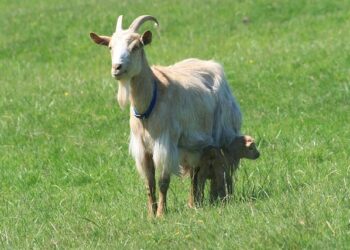Transforming Volcanic Surveillance: Insights from Iceland’s Dike Activity
A groundbreaking study is harnessing fiber-optic geodesy to explore the intricate nature of dike activity in Iceland, a region renowned for its volcanic phenomena. As tectonic forces continuously reshape the Earth’s crust,researchers are now equipped to monitor these changes with exceptional precision. This cutting-edge technique provides crucial insights into the complex behavior of recurring dike intrusions—magma-filled fissures that can lead to explosive eruptions. The findings, published in the prestigious journal Science, enhance our understanding of geological processes beneath one of Earth’s most active volcanic zones and clarify how tectonic movements relate to volcanic occurrences. With Iceland attracting geologists and volcanologists globally, this research not only enriches our knowledge of eruption dynamics but also carries important implications for assessing risks in populated areas near active volcanoes.
Understanding Dike Activity in Iceland
The examination into dike activity within Iceland reveals interesting insights about the geological forces that shape this dynamic landscape. Utilizing advanced fiber-optic geodesy techniques, scientists have captured minute-scale movements that offer an unprecedented level of detail regarding magma flow tracking. This innovative approach allows researchers to collect deformation data with remarkable accuracy, enabling them to observe how dikes expand and contract due to varying pressures within Earth’s crust. Several key discoveries emerged from this research:
- Unexpected Eruption Triggers: Findings suggest that dike intrusions can initiate suddenly, highlighting the need for advanced monitoring systems.
- Pressure Fluctuations: Regular variations were noted, indicating a complex interplay among various factors affecting magma movement.
- Cyclic Dike Behavior: Identifying patterns associated with recurring dikes is vital for predicting future eruptions and mitigating potential hazards.
This thorough analysis led researchers to create models illustrating how small-scale dynamics can influence larger volcanic events. A summary table below encapsulates essential metrics recorded during recent intrusion episodes:
| Metric | Observation |
|---|---|
| Magnitude of Deformation | Up to 15 cm within minutes |
The integration of high-resolution spatial data alongside time-lapse observations signifies a transformative era in volcanology where environmental changes are monitored and interpreted instantaneously. This knowledge not only enhances our understanding of geological activities in Iceland but also supports public safety strategies against potential volcanic threats.
Advancements in Fiber-Optic Geodesy: A New Frontier for Volcanic Monitoring
The latest developments in fiber-optic geodesy are revolutionizing how scientists track volcanic activity—especially pertinent in regions like Iceland where dike intrusions frequently occur. By utilizing distributed fiber-optic sensing technology, researchers can detect minute deformations within Earth’s crust while providing an intricate view into subsurface movements. This pioneering method enables real-time monitoring capabilities that considerably enhance eruption prediction efforts and hazard assessments by capturing subtle shifts occurring within volatile systems.
This state-of-the-art technology paves new avenues for immediate analysis while supplying critical data beneficial both for scientific exploration and emergency response teams during crises.Key benefits offered by fiber-optic geodesy include:
- Pinnacle Resolution Measurements: Detects alterations at centimeter precision.
- Synchronous Data Collection: Facilitates prompt analyses essential during unpredictable events.
- Cuts Costs Over Time: More economical than conventional monitoring methods as time progresses.
- Diverse Infrastructure Durability: Fiber optics exhibit greater resilience against environmental challenges.
| Feature | Traditional Methods | Fiber-Optics Geodesy |
|---|---|---|
| Data Resolution | < td >Low < td >High||
| Mediocre    | High   | ADVERTISEMENT |















